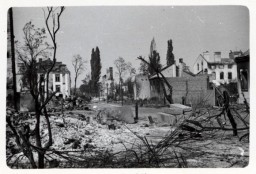<< Previous | Displaying results 2561-2570 of 2604 for "" | Next >>
-
Polish civilians are forced to dig a mass grave
PhotoPolish civilians under SS and Selbstschutz (ethnic German self-defense organization) guard are forced to dig a mass grave prior to their execution in the forest near Tuchola. Tuchola Forest, Bydgoszcz, Poland, October 27, 1939.

-
Execution of Polish teachers
PhotoTeachers from Bydgoszcz and the surrounding area a few moments before their execution by firing squad in the "Valley of Death" near Fordon. The first in line is Wladyslaw Bielinski, a primary school teacher from Wiag. The Nazis sought to destroy Polish culture and the Polish nation, and eliminate any resistance, by arresting and murdering Poles. German police, SS, and army units and ethnic German “self-defense” forces shot thousands of Polish civilians. Among those shot were wealthy landowners, some…
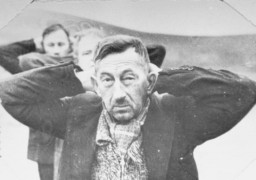
-
SS personnel lead Polish women into a forest for execution
PhotoPolish women from the Pawiak and Mokotow prisons in nearby Warsaw are led into the Palmiry forest for execution by SS personnel.The original caption reads: "Their Nazi executioners leading a group of Polish women, according to the information attached to this picture which was just received through Polish sources. Hundreds of cvilians, men, women and even young children are said to be systematically 'eliminated' under the Nazi scheme of things in war-torn Poland". Palmiry Forest, Poland,…
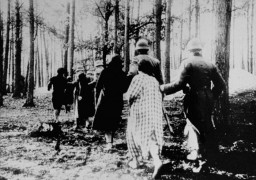
-
The Armia Krajowa during the Warsaw uprising
PhotoMembers of the Zoska battalion of the Armia Krajowa stand atop a German tank captured during the 1944 Warsaw uprising. The tank was used by the battalion during its capture of the Gesiowka concentration camp. Warsaw, August 2, 1944.
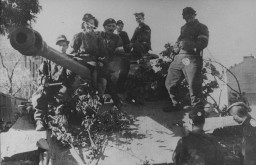
-
Jews liberated from the Gęsiówka camp during the Warsaw uprising
PhotoA member of the Zoska battalion of the Armia Krajowa escorts two of 348 Jews liberated from the Gęsiówka concentration camp during the Warsaw Polish uprising. August 5, 1944.

-
Soldiers of the Armia Krajowa
PhotoSoldiers of the Polish Home Army (Armia Krajowa) take cover behind a barricade during the Warsaw Polish uprising. During the uprising, the Home Army was supported by 2,500 soldiers from other resistance movements, such as the National Armed Forces (Narodowe Siły Zbrojne, NSZ) and the communist People's Army (Armia Ludowa, AL). Only a quarter of the partisans had access to weapons, fighting against 25,000 German soldiers equipped with artillery, tanks, and air forces. Two of the three soldiers shown here…

-
Female Soldiers of the Polish Home Army
PhotoSoldiers of the Polish Home Army Women's Auxiliary Services, taken captive by the Germans in October 1944 as a result of the Warsaw Polish uprising. After the uprising ended on October 2, the Germans took as prisoners of war more than 11,000 soldiers of the Polish Home Army.

-
Buildings destroyed during the Warsaw Polish uprising
PhotoPlanned as a short military revolt, the Warsaw Polish uprising lasted 63 days, from August to October 1944. In the end, German troops destroyed the majority of Warsaw during and immediately after the uprising. Photo dated January 17, 1945.
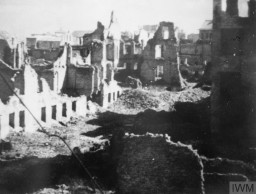
-
Warsaw Polish uprising
PhotoSoldiers from the Kiliński Battalion of the Polish Home Army take a German prisoner during the Warsaw Polish uprising. August 20, 1944.
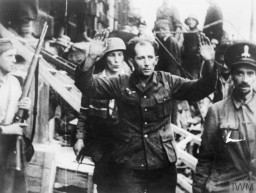
-
Destruction in Warsaw
PhotoFollowing the German invasion of Poland on September 1, 1939, Warsaw suffered heavy air attacks and artillery bombardment. German troops entered the city on September 29, shortly after its surrender. This photograph was taken by Julien Bryan, an American documentary filmmaker who captured the German bombardment and its impact on the Polish citizenry. Warsaw, Poland, ca. 1939.
